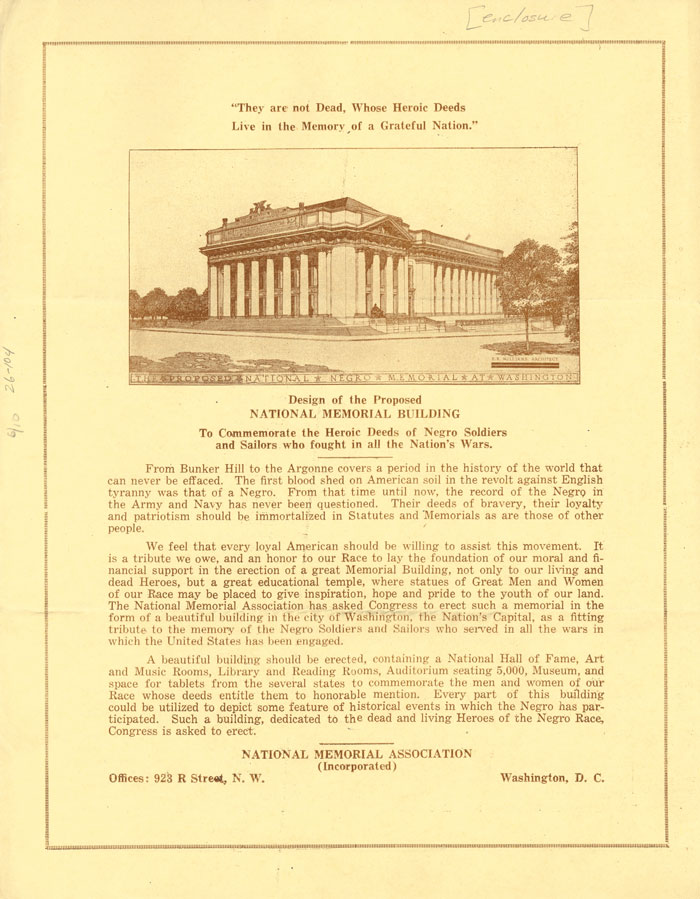
Smithsonian’s African American History Museum Fulfills an Association’s 100-Year Dream
The journey behind the creation of the new Smithsonian National Museum of African American History and Culture, in Washington, DC, is one that spans more than 100 years. That journey started with an association's advocacy work.
The Smithsonian National Museum of African American History and Culture is brand-new; the basic idea behind the museum, which opens this weekend, is anything but.
In fact, it was 100 years ago that the National Memorial Association got its start, with the goal of creating a museum to honor African-American culture. The association was born from the work of the “Committee of Colored Citizens,” a group of Civil War veterans that visited Washington, DC, 50 years after the end of that war.
According to a post on the Smithsonian Institution Archives’ Bigger Picture blog, the committee was there to right a wrong: During a parade in DC immediately after the war, black soldiers were not allowed to march, so the committee raised funds to remedy that with an anniversary march.
The National Memorial Association, which spun off from the committee the next year, ended up taking on an even larger task. For decades, the group attempted to fight legislatively for the creation of a museum that would honor not only the black soldiers who fought during the Civil War but also African-American culture in general.

“We feel that every loyal American should be willing to assist this movement,” a 1926 flyer created by the association stated. “It is a tribute we owe, and an honor to our Race to lay the foundation of our moral and financial support in the erection of a great Memorial Building, not only to our living and dead Heroes, but a great educational temple, where statues of Great Men and Women of our Race may be placed to give inspiration, hope, and pride to the youth of our land.”
The flyer also featured a proposed design for the building. Ultimately, that design didn’t come to pass; instead, today’s building, placed within view of the Washington Monument, features a strikingly modern design that’s intended to reflect the artwork of a crown used in an ancient Yoruban sculpture. (The building cost roughly $500 million and was funded with the help of a number of prominent black philanthropists, including Oprah Winfrey.)
“It was tough to convince the planners,” noted the building’s primary architect, David Adjaye, in comments to The Guardian. “But once you start looking at the Mall, you realize there are a lot of other materials here beyond stone, from terracotta to bronze moldings.”
In some ways, deciding on the building’s impressive design was the easy part. The hard work occurred during decades of lobbying work in Congress, which came in fits and starts—first gaining momentum in the 1920s, through a law signed by Calvin Coolidge; losing it during the Great Depression; regaining it after the death of Martin Luther King Jr.; and ultimately culminating in a law signed by George W. Bush, in 2001.
Robert Wright, chairman of the commission that planned the museum and a member of its advisory council, emphasized in an interview with McClatchy that the final result—with complex, emotional exhibits reflecting the good and the bad of African-American history in the United States—is well worth it.
“It’s a history that’s long overdue to be told,” Wright told the news service. “Our history has never been told in conjunction with everybody else’s history. And we feel that we’ve accomplished so much in this country since we were brought here against our will. Those things need to be told so that we all understand where we came from and how far we’ve come.”
The Smithsonian National Museum of African American History and Culture. (roma g/Flickr)






Comments